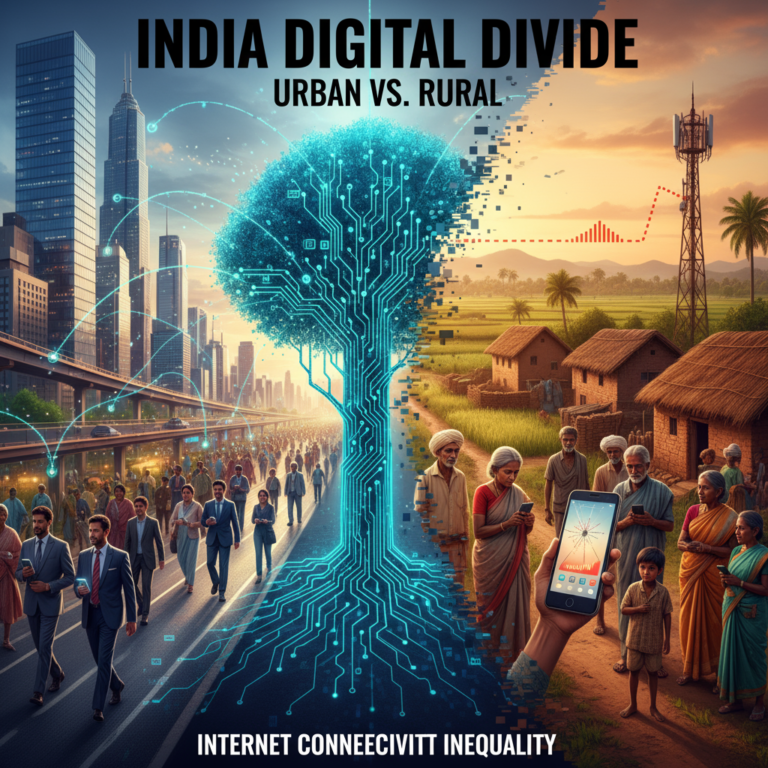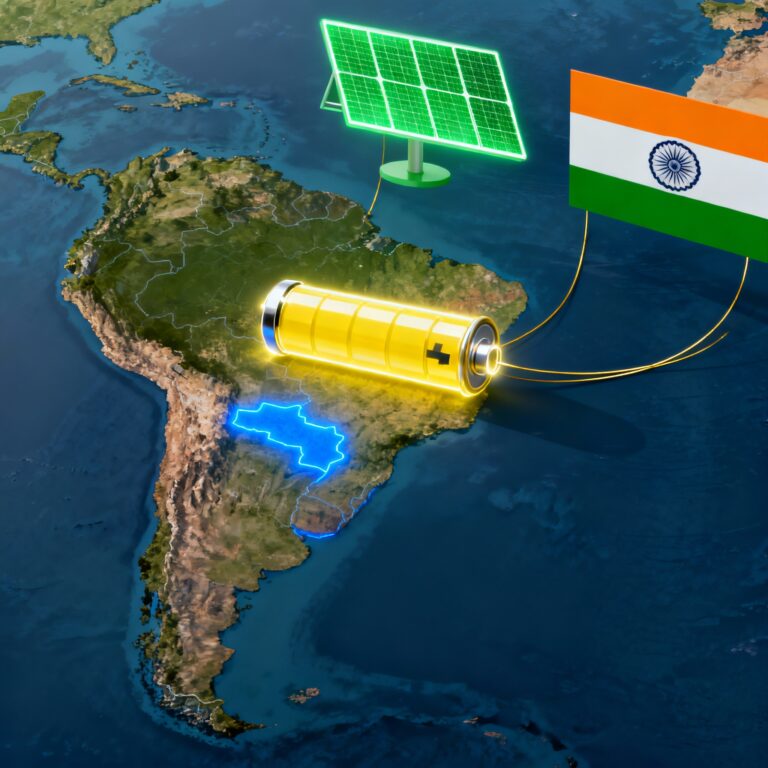India’s 1.4 billion population faces an unprecedented challenge as climate change increasingly disrupts agriculture, threatening food security for millions. With the country ranking 105th out of 127 nations in the Global Hunger Index 2024 and 19.46 crore people chronically undernourished, urgent action through climate-smart agriculture has become critical for survival. globalhungerindex
Key Highlights
- India ranks 105th in Global Hunger Index 2024 with 19.46 crore people undernourished
- Climate change could reduce major crop yields by 10% by 2025 with 1.5°C temperature rise
- 65% of India’s cultivated land depends on erratic monsoons, making it highly vulnerable
- Government schemes like NFSA cover 59% population while PMFBY insured 56.8 crore farmers
- NICRA developed 1,888 climate-resilient crop varieties including drought and flood-tolerant seeds
The Climate-Agriculture Crisis Nexus
Rising Temperatures and Extreme Weather
India is experiencing increasingly erratic climate patterns that directly threaten agricultural productivity. By 2025, average temperatures are projected to rise by 1.5°C, potentially causing up to 10% loss in major crop yields. farmnaut
Heat stress during critical growth phases severely impacts staple crops. For wheat, every 1°C temperature increase can reduce yields by 5%. Similarly, rice production faces significant challenges from prolonged heat waves that disrupt flowering and grain formation.
Monsoon Variability and Water Stress
With 65% of India’s cultivated land being rainfed, the country’s agriculture remains extremely vulnerable to monsoon fluctuations. Recent years have witnessed: preventionweb
- Delayed monsoons affecting sowing schedules across Maharashtra, Karnataka, and Telangana
- Erratic rainfall patterns creating both drought and flood conditions in the same season
- Extended dry spells followed by intense downpours causing crop damage and soil erosion
Extreme Weather Events Impact
Climate change has intensified the frequency and severity of extreme weather events affecting agriculture:
Floods and Waterlogging: Destroy paddy, wheat, and sugarcane crops, particularly in eastern states like West Bengal and Bihar.
Landslides and Cloudbursts: Damage terraced farming systems in Himalayan states, affecting apple orchards and hill agriculture.
Cyclones: Particularly devastating for eastern coastal agriculture, causing massive crop and fisheries losses.
Droughts: Affect livestock health, reduce milk production, and force farmers into distress migration.
Impact on India’s Food Security Pillars
Availability: Declining Crop Yields
Climate stress significantly impacts the production of India’s staple crops:
- Rice yields are declining due to heat stress and irregular flooding
- Wheat production faces threats from rising spring temperatures
- Pulse cultivation struggles with erratic rainfall, contributing to protein deficiency
- Horticultural crops suffer from unseasonal weather patterns
Accessibility: Rising Food Inflation
Climate-induced crop failures translate into higher food prices, disproportionately affecting poor households. Food inflation creates barriers to accessing nutritious foods, pushing vulnerable populations deeper into malnutrition.
Stability: Disrupted Supply Chains
Frequent extreme weather events disrupt food distribution networks, creating supply chain bottlenecks. Transportation delays during floods or cyclones prevent timely food grain distribution to remote areas.
Nutrition: Quality Deterioration
Climate stress reduces the nutritional quality of crops. Higher CO2 levels decrease protein content in wheat and rice, while heat stress affects vitamin and mineral concentrations in fruits and vegetables.
The alarming statistics reveal the gravity of the situation:
- 35.5% of children suffer from stunting
- 18.7% experience wasting
- 57% of women are anemic
- 67% of children are affected by anemia
Government Response: Policy Framework & Schemes
National Food Security Act (NFSA) 2013
The NFSA provides a comprehensive safety net ensuring subsidized food grains to vulnerable populations. Currently covering 59% of the projected population, the scheme distributes rice, wheat, and sugar through over 5 lakh Fair Price Shops across India.
Coverage Statistics:
- Target coverage: 75% rural and 50% urban population
- Current coverage: 59% under NFSA cards plus 11% under state schemes
- Total beneficiaries: 950 million people with NFSA equivalent entitlements
Pradhan Mantri Fasal Bima Yojana (PMFBY)
Launched in 2016, PMFBY provides comprehensive crop insurance coverage against climate risks:
- 56.8 crore farmer applications enrolled since inception
- Rs. 1,55,977 crore claims paid to farmers
- Coverage growth: 33.4% and 41% year-on-year increase in 2021-22 and 2022-23
- Women participation: 36-48% increase in applications during 2022-23
The scheme covers all non-preventable natural risks from pre-sowing to post-harvest stages at minimal premium rates for farmers.
National Innovations in Climate Resilient Agriculture (NICRA)
ICAR’s flagship program has achieved remarkable success in developing climate-resilient technologies:
Research Achievements:
- 1,888 climate-resilient crop varieties developed
- 891 cereal varieties, 319 oilseed varieties, 338 pulse varieties
- 68 climate-resilient technologies demonstrated across 454 villages
- District Agriculture Contingency Plans developed for 650 districts
Climate-Smart Agriculture: The Way Forward
Drought and Flood-Resistant Crop Varieties
India has made significant progress in developing climate-resilient crops:
Rice Varieties:
- Sahbhagi Dhan: Drought-tolerant variety suitable for water-scarce regions
- Swarna Sub-1: Flood-tolerant rice for waterlogged areas
Millet Revolution:
Following the International Year of Millets 2023, India is promoting these climate-hardy crops:
- Pearl millet (bajra): Withstands high temperatures and grows in arid soils
- Sorghum: Requires minimal water and thrives in drought conditions
- Finger millet: Rich in nutrients and climate-resilient
Heat-Tolerant Crops:
- Heat-tolerant wheat varieties for Punjab and Haryana
- Drought-resistant pulses like pigeon pea and black gram
Water Management and Irrigation
Efficient water use becomes crucial as climate variability increases:
Micro-Irrigation Technologies:
- Drip irrigation systems improve water use efficiency by 40-60%
- Sprinkler irrigation for crops like wheat and sugarcane
- Per Drop More Crop scheme provides subsidies for precision irrigation
Water Harvesting:
- Rainwater harvesting structures in drought-prone areas
- Check dams and farm ponds for water storage
- Watershed development programs for sustainable water management
Sustainable Farming Practices
Organic Farming Initiatives:
- Paramparagat Krishi Vikas Yojana (PKVY): Rs. 31,500 per hectare assistance over 3 years pib
- Zero Budget Natural Farming: Reduces input costs and improves soil health
- Biological pest control: 88 biocontrol agents and 31 biopesticides identified ils
Soil Health Management:
- Soil Health Cards provide nutrient recommendations to 14 crore farmers
- Organic matter enhancement through composting and green manuring
- Crop rotation and diversification to maintain soil fertility
Technology and Innovation in Resilient Farming
Digital Agriculture Solutions
Modern technology plays a crucial role in climate adaptation:
Weather Forecasting:
- Real-time weather advisories help farmers make informed decisions
- Early warning systems for extreme weather events
- Satellite-based crop monitoring for yield estimation
Precision Agriculture:
- GPS-guided farm machinery for efficient resource use
- Soil sensors for monitoring moisture and nutrient levels
- Drone technology for crop surveillance and spraying
Agroforestry and Integrated Systems
Tree-Crop Integration:
- Agroforestry systems provide shade and wind protection
- Bamboo cultivation through National Bamboo Mission
- Silvopasture systems combining trees, crops, and livestock
Integrated Farming Systems:
- Crop-livestock integration for diversified income
- Fish-rice farming in flood-prone areas
- Poultry-crop systems for sustainable protein production
International Cooperation and Knowledge Sharing
India actively participates in global climate initiatives:
Paris Agreement Commitments:
- Climate adaptation strategies for agriculture
- Technology transfer for sustainable farming
- Carbon sequestration through improved soil management
UN Sustainable Development Goals:
- SDG-2 Zero Hunger through sustainable agriculture
- Knowledge sharing with other developing nations
- South-South cooperation for climate-smart practices
Building Resilient Food Systems
Supply Chain Strengthening
Post-Harvest Management:
- Cold storage facilities to reduce crop losses
- Processing infrastructure for value addition
- Transportation networks resilient to climate disruptions
Buffer Stock Management:
- Strategic food reserves for emergency distribution
- Decentralized storage to reduce transportation costs
- Technology-enabled inventory management
Nutrition Security Focus
Diversified Diets:
- Promoting millets for nutritional security
- Kitchen gardens for micronutrient-rich vegetables
- Biofortification of staple crops with essential nutrients
Targeted Interventions:
- Anganwadi centers providing supplementary nutrition
- Mid-day meal programs ensuring child nutrition
- Women-focused nutrition programs to break intergenerational malnutrition
Climate change poses an existential threat to India’s food security, but the path forward is clear. Through climate-smart agriculture, government schemes like NFSA and PMFBY, and innovative farming practices, India can build resilience against climate shocks.
The success stories from NICRA’s 1,888 climate-resilient varieties and the millet revolution demonstrate that solutions exist. However, scaling up these interventions requires sustained effort from government, farmers, and society.
Mains
Q. “Climate change is no longer an environmental issue but a food security challenge for India.” Discuss with examples









+ There are no comments
Add yours